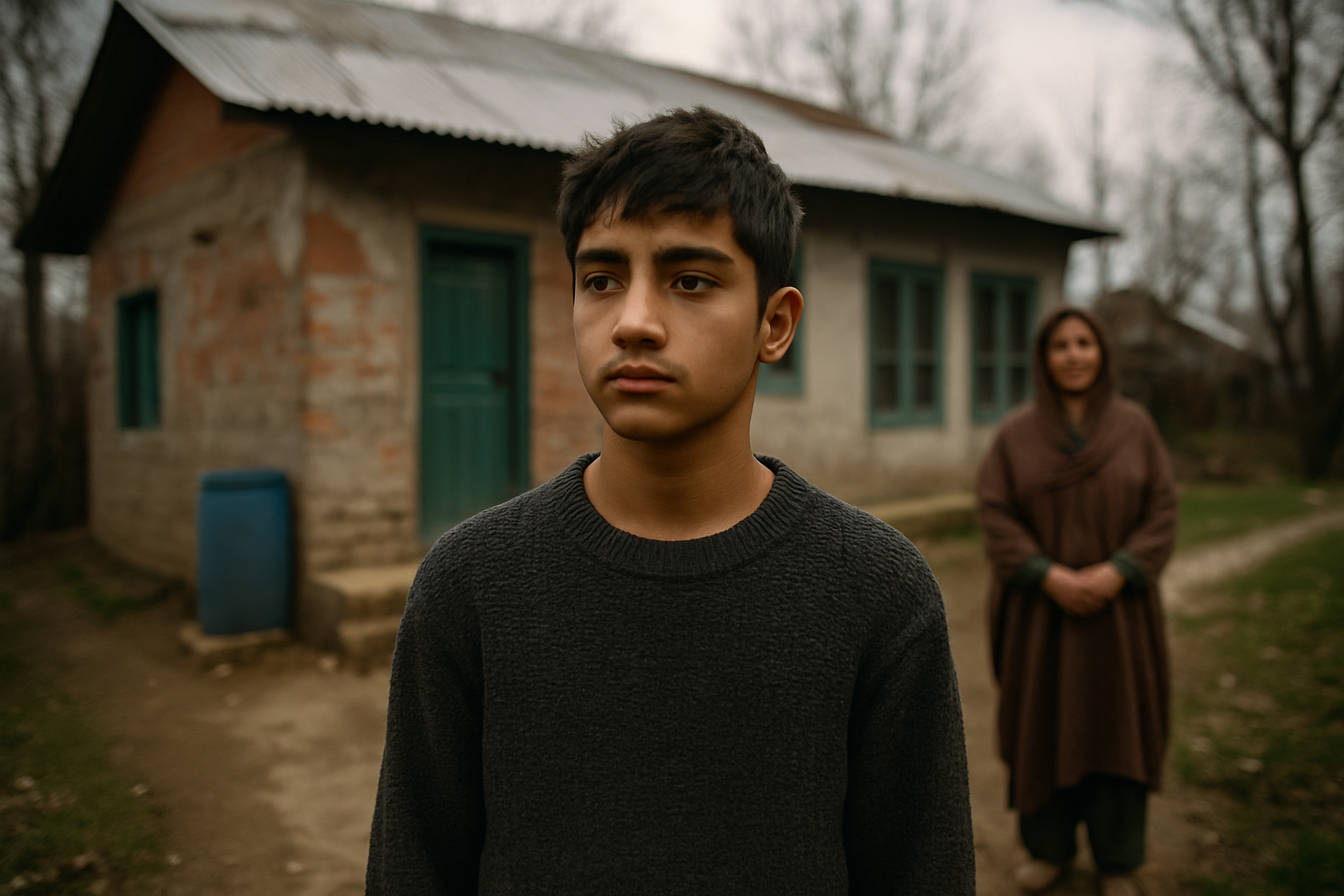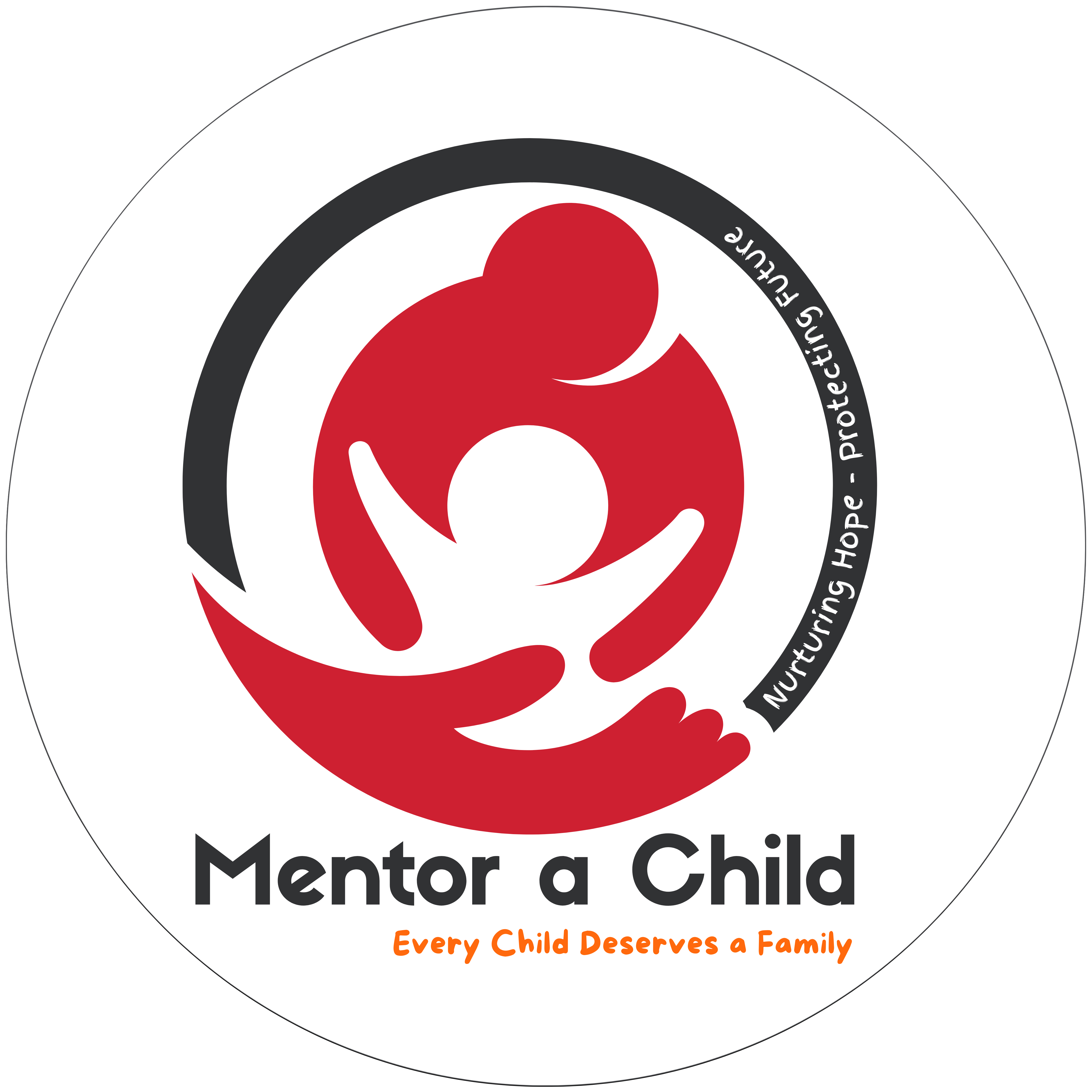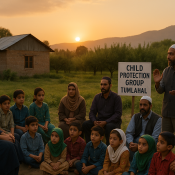
Shabir Ahmad
Background
Shabir Ahmad (Name Changed), a 16-year-old resident of a village in Baramulla district, faced severe hardships following his father’s untimely death. The loss of the family’s sole breadwinner, combined with his mother’s deteriorating health, pushed the household into destitution. Their situation exemplified the complex challenges faced by vulnerable families in Kashmir.
Initial Circumstances
The father’s death occurred when Shabir was merely three years old.
His mother, being a non-local, could not manage the household and fell ill
The family survived on relatives’ support and ration assistance provided by the community
Shabir’s elder sister temporarily supported the family through sewing work
The situation worsened after the sister’s marriage, which eliminated their only source of income
The mother’s mental health issues further complicated their situation
Intervention Strategy
The Human Welfare Voluntary Organisation, under the UNICEF (United Nations Children’s Fund) supported project, “Building Community Based Care Mechanism for Children in Need of Care and Protection in Kashmir, Jammu and Kashmir,” through its Community Based Child Protection Group, brought Shabir into their dataset and initiated the following intervention strategy:
Implementation of a Financial Support Package
Opening a dedicated account for Shabir for systematic distribution of funds.
Arranging monthly contributions worth Rs 1500 through the CPG.
Won a scholarship of Rs 36,000 under Mission Vatsalya for the academic year 2023
House Improvement
Helped connect the family with the Pradhan Mantri Awas Yojana (PMAY)
Aided in constructing two more rooms
Improved the family’s life condition drastically
Additional Support Interventions
Consistent follow-up support
Assisted Shabir’s second sister to get marriage assistance from the social welfare department
Continued tracking of the progress of the family
Outcomes and Impact
The intervention brought considerable positive outcomes
Educational Security
Did not let Shabir drop out from studies
Provided motivation through financial support
Ensured continued academic progression
Financial Security
Established regular monthly income through CPG
Secured substantial educational scholarship
Created multiple channels of financial support
Living Conditions
Improved housing infrastructure
Enhanced family’s quality of life
Provided stable living environment
Key Lessons and Conclusions
This case study demonstrates several crucial insights:
The effectiveness of coordinated community-based care mechanisms in addressing complex vulnerabilities
The importance of convergence in approaching multiple aspects of family welfare
Success in collaboration by HWVO, UNICEF, and schemes by the government
Impact of comprehensive support on vulnerable families
This case demonstrates how the intervention from systematic efforts through several stakeholders can produce long-term, sustainable change in the lives of vulnerable families. This shows the significance of attending to short-term and long-term needs together by working at the grassroots level.




